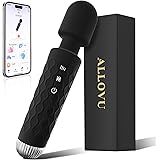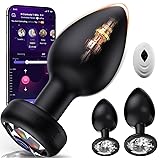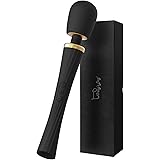Communicating Your Desires: How to Talk About What You Want in Bed
Introduction to Sexual Communication
Effective communication about sexual desires is a fundamental aspect of any intimate relationship. It serves as the foundation that can significantly enhance emotional closeness and physical satisfaction between partners. Open conversations about sexual preferences can cultivate a deeper understanding of each partner’s likes, dislikes, and boundaries, ultimately leading to a more fulfilling sexual experience. When both individuals feel comfortable sharing their needs, intimacy flourishes, creating a safer space for exploration and connection.
However, several barriers often impede sexual communication. Common challenges include fear of vulnerability, anxiety about rejection, or the possibility of hurting a partner’s feelings. Many individuals also struggle with self-expressions related to their own desires, which can stem from cultural norms or past experiences. These barriers can result in unspoken assumptions or unmet needs, leading to frustration and dissatisfaction in the relationship. To break through these obstacles, partners must develop a shared language of intimacy that encourages honesty and openness.
Overcoming these communication barriers is essential for fostering a healthy sexual relationship. When partners actively engage in meaningful dialogue about their desires, they affirm not only their individual needs but also their shared journey. Such discussions can also help in reassessing and recalibrating each partner’s understanding of what is pleasurable and desirable, enhancing overall satisfaction. By prioritizing sexual communication, couples can build resilience against misunderstandings and strengthen their connection on multiple levels. This foundational work is key to maintaining a vibrant and fulfilling sexual dynamic.
Understanding Your Own Desires
To effectively communicate what you want in bed, it is essential to first understand your own sexual desires. Self-awareness is the cornerstone of healthy communication in any intimate relationship. By reflecting on your preferences, fantasies, and boundaries, you can articulate your needs more clearly to your partner, fostering a deeper connection and enhancing mutual satisfaction.
Begin by taking some time for personal reflection. Consider what aspects of intimacy you find most pleasurable and what fantasies intrigue you. Journaling can be an effective way to sort through your thoughts and feelings—write down your desires, what excites you, and any limits you have. This process can help you gain clarity on your sexual identity, which is crucial when approaching discussions with your partner.
Moreover, think about the different dimensions of intimacy that are important to you. This includes not only physical acts but also emotional closeness and vulnerability. Understanding which elements you value most can guide you in expressing your desires more effectively. For instance, if you crave more emotional intimacy, your discussion should focus not just on specific activities, but also on how you wish to connect on a deeper level.
It may also be beneficial to explore your comfort with various scenarios. Are there particular experiences that excite you or things you would prefer to avoid? Knowing your limits helps you communicate better and sets a foundation for mutual respect in the relationship. Establishing clear boundaries will reassure both you and your partner, creating a safer space for open dialogue.
Ultimately, understanding your own desires is pivotal in conveying them to your partner. When you have a solid grasp of what you want, you can engage in more fruitful discussions that lead to fulfilling sexual experiences.
Using ‘I’ Statements to Express Desires
Effective communication about desires and needs in intimate relationships is pivotal for fostering understanding and connection between partners. One effective technique to convey these feelings is the use of ‘I’ statements. This communication method helps individuals express their feelings and desires without assigning blame to their partner, promoting a more empathetic dialogue. ‘I’ statements focus on the speaker’s experience rather than the listener’s actions, which can reduce defensiveness and facilitate a more open conversation.
When using ‘I’ statements, the structure typically follows this format: I feel [emotion] when [situation] because [reason]. For example, instead of saying, “You never initiate anything,” one might say, “I feel neglected when you don’t initiate intimacy because I desire more connection between us.” This approach highlights the speaker’s feelings rather than accusing the partner, which can encourage a more supportive and understanding response.
Another example lies in discussing specific desires. Instead of saying, “You don’t satisfy me,” one could frame it as, “I feel unsatisfied when we don’t explore new activities because I want to enhance our sexual experience together.” This not only communicates a need but also invites collaboration to find solutions that work for both partners.
Moreover, ‘I’ statements can also address emotional needs beyond physical intimacy. For instance, saying, “I feel loved when you cuddle with me because it makes our bond stronger” can emphasize the emotional connection associated with physical expressions of affection. Such statements create an atmosphere where both partners can discuss their wants openly without fear of criticism, leading to deeper intimacy and understanding.
The Role of Active Listening
Active listening is a fundamental component of effective communication, particularly when it comes to discussing intimate subjects such as sexual desires. It goes beyond merely hearing the words spoken; it involves fully engaging with the speaker, understanding their message, and responding thoughtfully. This process is essential in creating a safe space where both partners can express their needs and preferences without fear of judgment or dismissal.
To practice active listening, one must demonstrate genuine interest in what the partner is saying. This can be achieved by maintaining eye contact, nodding in acknowledgment, and minimizing distractions. By doing so, individuals signal to their partners that their feelings and thoughts are valued. Reflecting back what a partner has shared is another effective strategy. For example, if a partner expresses discomfort with a particular action, paraphrasing their concern can validate their feelings and confirm that they have been understood. This technique not only encourages more in-depth dialogue but also reinforces trust and intimacy between partners.
Validation of feelings is also a critical feature of active listening. Recognizing and affirming a partner’s emotions fosters an environment where both individuals feel respected and supported. For instance, acknowledging that it’s normal to have varying desires or boundaries can reduce anxiety and create a more open discussion. It is essential to avoid dismissive phrases that may minimize a partner’s feelings, as these can lead to misunderstandings and resentment.
In engaging in active listening, partners can discuss their desires more openly and effectively. By fostering a culture of mutual respect and understanding, they pave the way to a healthier and more satisfying sexual relationship. Through these practices, both partners are empowered to share their needs, leading to a more fulfilling intimate connection.
Body Language and Non-Verbal Cues
Effective communication in intimate relationships often extends beyond the spoken word. Body language and non-verbal cues play a significant role in expressing and interpreting desires in the bedroom. These non-verbal elements can convey emotions, intentions, and preferences, enriching the sexual experience and facilitating deeper connections between partners.
Gestures and physical proximity are vital components of non-verbal communication. For instance, leaning in toward a partner while engaging in conversation can signify interest and openness to exploration. Similarly, touches that are tender or exploratory can reveal attraction or willingness to engage further. Observing such behaviors enables partners to gauge each other’s comfort levels and desires without the need for explicit verbalization.
Facial expressions also contribute to understanding desires. A smile, a raised eyebrow, or even a look of surprise can offer insight into a partner’s feelings towards certain intimate activities. Furthermore, making eye contact can create a powerful connection that fosters trust and encourages vulnerability in sharing desires. Being aware of these subtle signals can enhance the sexual experience significantly.
Attuning to a partner’s non-verbal signals involves a combination of observation and intuition. It requires an openness to interpret signals accurately and respond accordingly, allowing for a more relaxed and enjoyable encounter. In contrast, misreading or ignoring non-verbal cues can lead to misunderstandings and dissatisfaction.
In the context of discussing what one wants in bed, integrating body language and non-verbal cues can lead to a harmonious exchange. By recognizing and responding to these signals, partners can create a more attuned and satisfying approach to intimacy, ultimately enriching their overall connection.
Creating a Safe Space for Discussion
Effective communication regarding sexual desires often hinges on the creation of a comfortable environment. Establishing a safe space allows individuals to engage in open and honest dialogue about their needs and preferences in bed. Trust is a fundamental component of this safe space, as it fosters an atmosphere where both partners feel secure enough to express their thoughts and feelings without fear of judgment or repercussion.
To begin, it is essential to choose the right timing for such discussions. Opting for a moment when both partners are relaxed and free from distractions can significantly enhance the quality of the conversation. This might be during a quiet evening at home or in a relaxed setting where both individuals feel at ease. Avoid initiating these discussions during moments of tension or conflict, as this may hinder open communication.
When approaching the topic, it is crucial to do so gently and respectfully. Using “I” statements can help frame desires positively, allowing individuals to express their feelings without placing blame or creating defensiveness in their partner. For instance, saying, “I would really enjoy trying…” rather than “You never want to…” encourages a more productive dialogue. Additionally, active listening plays a pivotal role in ensuring both partners feel heard and valued. Practicing empathy and validating each other’s feelings can deepen the bond and foster mutual respect.
Furthermore, setting ground rules for these conversations can enhance comfort levels. Agreeing to take breaks, ensuring confidentiality, and committing to avoid negative responses can all contribute to a positive atmosphere. By focusing on the importance of trust and open communication, partners can create a safe space that encourages healthy discussions about their desires in bed.
Navigating Differences in Desires
In any intimate relationship, it is not uncommon for partners to experience differing sexual desires. These variations can stem from individual preferences, past experiences, and even cultural backgrounds. Recognizing and navigating these differences is crucial for maintaining a healthy and fulfilling sexual connection. Open and respectful communication stands at the forefront of this process, enabling each partner to express their needs and preferences without fear of judgment.
One effective strategy for managing differing desires is to establish a safe space for dialogue. This involves setting aside time for honest discussions about sexual preferences, desires, and boundaries. It is essential that both partners approach these conversations with empathy, aiming to understand rather than criticize each other’s viewpoints. Active listening can foster a mutual understanding that reinforces the foundations of a successful relationship.
Another useful approach is to find common ground. Partners should focus on shared interests and preferences, which may create opportunities to explore new experiences together. For instance, if one partner enjoys a particular activity, the other partner might express willingness to try it, providing a pathway to greater intimacy. By discovering and focusing on mutual desires, couples can bridge gaps in their sexual compatibility.
Compromise plays a vital role in navigating sexual differences. Both partners should be prepared to negotiate and make concessions that respect each other’s desires and boundaries. This could mean setting limits on certain activities or agreeing to alternate between different interests over time. These discussions of compromise should be approached with flexibility, understanding that individual needs may evolve and require adaptation.
Ultimately, successfully navigating differences in desires requires openness, respect, and a willingness to grow together. With ongoing and constructive communication, couples can ensure that each partner’s wants and needs are validated and addressed over time.
Following Up After the Conversation
Effective communication regarding sexual desires is an ongoing process that transcends a single conversation. Following up after initial discussions is essential for maintaining an open dialogue between partners. This process allows couples to revisit the topics discussed, reassess their evolving desires, and ensure that both partners feel satisfied and heard. Regular check-ins can prevent misunderstandings and help nurture a healthy sexual relationship.
One effective strategy for following up is to establish a routine for these discussions. Setting aside dedicated time to talk about intimate experiences, desires, and any potential changes can create a safe environment for both partners. This can take the form of a weekly or monthly conversation where partners can reflect on their experiences and share any adjustments they might wish to make. In doing so, it allows individuals to express themselves freely and promotes mutual understanding.
During these conversations, it is important to ask open-ended questions and be receptive to your partner’s feelings. For instance, asking questions such as “How have you felt about our experiences lately?” or “Is there anything you would like to try differently?” encourages a two-way dialogue. Listening actively to your partner’s responses demonstrates respect for their needs and fosters a deeper emotional connection. Similarly, sharing personal reflections about your own desires encourages your partner to express themselves without fear of judgment.
Additionally, be mindful that sexual desires may change over time due to various factors such as stress, health, or relationship dynamics. Regular follow-ups can facilitate the recognition of these changes, ensuring that both partners’ needs are continually met. This ongoing commitment to communication can solidify trust and intimacy, reinforcing the foundation of the relationship and enhancing sexual compatibility over the long term.
Conclusion: Embracing Open Communication
In navigating the complexities of sexual relationships, open communication about desires is paramount for cultivating intimacy and satisfaction. As discussed throughout this blog post, the importance of expressing one’s sexual wants and needs cannot be overstated. The ability to articulate preferences clearly and constructively fosters a more profound mutual understanding between partners, leading to a more fulfilling sexual experience.
Moreover, embracing strategies such as active listening, utilizing “I” statements, and choosing the right moments for these conversations can significantly enhance the quality of discussions about sexual desires. It creates a safe space where both parties feel comfortable sharing—not only their wishes but also their boundaries. This mutual respect for each other’s feelings is fundamental for building trust, which forms the cornerstone of any intimate relationship.
It is equally crucial to acknowledge that discussing sex can sometimes evoke vulnerability or discomfort. However, by prioritizing open dialogue, couples can unravel feelings of insecurity, misconceptions, and unmet expectations. The practice of regular communication does not merely address current desires but allows for ongoing adjustments and explorations of new fantasies as they arise. In this way, partners can adapt and evolve together, further deepening their connection over time.
Ultimately, embracing open communication about sexual desires elevates the sexual experience to new heights. By applying the strategies outlined in this discussion, couples can overcome barriers that may hinder their intimate moments. Therefore, it is encouraged to adopt this approach, nurturing an environment ripe with intimacy and understanding that enhances one’s sexual relationship and overall well-being.
































